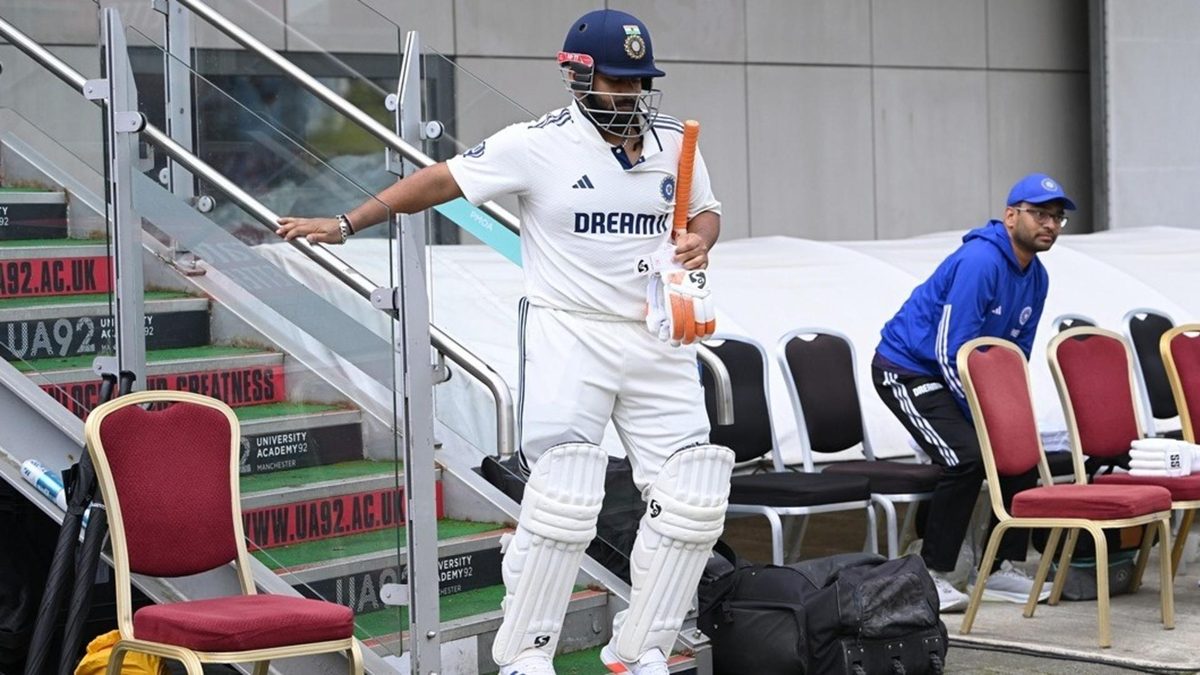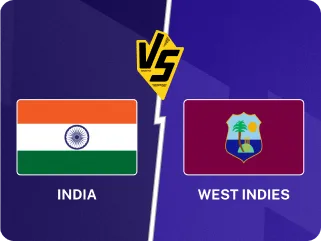
Rishabh Pant’s fractured foot in the first innings at Old Trafford reopened the discussion around full substitutes in Test cricket.
When the fracture was confirmed, few expected Rishabh Pant to step out to bat. When news got out that he might, few expected him to step out as soon as a wicket fell. When he did even that, few expected him to hit a four or a six or reach his fifty.
But he did all that. You can feel deeply emotional about all of it. Or you can simply file it under “just Rishabh Pant things”. Either way, it was an undeniably commendable effort.
It also demonstrated – not for the first time in history – something fundamentally wrong with cricket: it does not accommodate full substitutes.
Pant’s innings came two years after Nathan Lyon had batted with an injured calf that had prevented him from bowling. Batting is Lyon’s secondary skill, but he chose to risk further injury rather than a wicket go waste.
The heroics of Rick McCosker, Gordon Greenidge, Malcolm Marshall, Anil Kumble, Graeme Smith are famous. A full list of such acts of valour is not the point of this piece. While commendable, one cannot help but ask whether these are desirable and can be prevented.
In some cases, they should be prevented. Justin Langer was hit on the helmet off the first ball he faced in his 100th Test, at Johannesburg in 2005/06, and had to retire hurt. Chasing 292, Australia became 275-8. As Langer awaited his turn, fully padded up, captain Ricky Ponting threatened to declare if he stepped out. “If you declare, we are not friends any more,” warned Langer. Mercifully, Australia won by two wickets.
Before Langer, there was Bert Sutcliffe at Ellis Park in 1953. Before Sutcliffe, Eddie Paynter at Brisbane in the Bodyline series. The list of cricketers who risked death during a Test match is, yet again, long – like the one about to follow.
Jack Hobbs (appendicitis at Headingley 1921) and Norman O’Neill (stomach infection at Bombay 1964/65) could not bat in the respective Tests. At Kingston in 1957/58, Mahmood Hussain and Nasim-ul-Ghani went down early, leaving Garry Sobers (365 not out) and Conrad Hunte (260) to feast on the tired seamers, Fazal Mahmood and Khan Mohammad and amass 790-3. Injuries forced MAK Pataudi and Farokh Engineer to miss parts of Bangalore 1974/75, as it did to Steve Waugh and Jason Gillespie at Kandy in 1999/00.
In all these – and many other – cases, a Test match was reduced to a ten-versus-eleven contest for no reason. In some cases, they became nine-versus-eleven. “Imagine if we would’ve had to play with ten men against 11: how unfortunate would this be for us,” Gautam Gambhir, the Indian head coach, pointed out after the Test match.
It is not just the team in question: contests between two teams of unequal player counts over periods that long, while uncommon, are not desirable in any professional sport.
A bit of history
Cricket has always had substitutes. Ahead of a 1843 match against Hampshire at Southampton, Thomas Barker of Nottinghamshire broke his leg while getting out of a taxi. Since there was no travelling reserve – it was not unusual back then – Francis Noyes of Nottinghamshire was allowed to bat twice in each innings. Oh, the match had first-class status.
There are numerous examples of full substitutes in first-class cricket. Ernest Killick for Cyril Bland (Sussex versus Lancashire, 1897). John Broughton for Syd Barnes (Lancashire versus MCC, 1902). Billy Murdoch for Plum Warner and Leonard Harper for George Beldam (Gentlemen versus Players, 1904). And so on… though none of them matches England XI captain Herbie Hewett, who decided to not take further part in the 1895 game against Yorkshire after being booed by the crowd: Fred Spofforth took his place.
First-class cricket is not alone in this. The ICC tried out the Supersub in the 2000s before abolishing the concept. In the 2020s, the BCCI trialled the Impact Player – on similar lines – in the Syed Mushtaq Ali Trophy before using it in the IPL. Some countries allow substitutions in first-class matches when cricketers get released or are called up by the national side.
Summoned by England in 1982, Warwickshire’s Gladstone Small left the Lancashire game midway. Team manager David Brown replaced him and took a wicket. Not picked for the Test, Small returned and took Brown’s place in the county XI. Graham Onions’ famous 9-67 (he ran out the other batter) against Nottinghamshire in 2012 came when, released by England, he replaced Mitchell Claydon in the Durham XI.
When Surrey’s Gareth Batty fell ill against Kent in 2019, both sides agreed on Amar Virdi as a full substitute. As Virdi waited to bat, the ECB announced that the match would be stripped of first-class status if Virdi played: Batty had only been ill, not concussed or called up by England. Surrey played with ten men and lost.
Surrey suffered but Warwickshire or Durham did not, because the authorities had deemed that illnesses or injuries were not important enough to merit full replacements but national call-ups were.
A change in the right direction
Concussion substitutes led to a fundamental change. At every level – even Test cricket – teams can have full substitutes provided concussion is diagnosed. In 2019, Marnus Labuschagne became Test cricket’s first concussion substitute, for Steve Smith, making Australia the first Test side to have a playing XII. Later that year, Shannon Gabriel became Test cricket’s first No.12 in a batting line-up. No one minded.
The change has been seamless, so why not expand full substitutes to all injuries?
In June 2025, the ICC had asked the boards to trial with full-time like-for-like substitutions for “serious external injury on the field of play at any time after the match has started”. This mirrors the concussion substitute system that is in place today.
Harshit Rana coming in for Shivam Dube in a T20I drew some attention earlier this year, but there is little doubt that the concussion substitute has been a step towards a humane future. If the medical staff can be trusted to diagnose concussion, surely that trust can extend to external injuries.
That will address incidents like Pant’s and Smith’s but not Lyon’s, whose injury was not external. Perhaps the ICC does not want to leave room for gamesmanship.
If all injuries are brought under the full-substitute umbrella, one cannot rule out Ben Stokes’s concern (“if you stick me in an MRI scanner, I could get someone else in straightaway”) or Steven Finn’s fear (“if you could substitute a fresh bowler in because of injury it would just be wrong”).
One step at a time, then. To begin with, Test cricket can have full substitutes for serious external injuries. The all-injury expansion will need more scrutiny before implementation.
However, given that the process of medical tests and substitutions is already in place, there is little reason to wait for longer. The sooner Test cricket embraces the full injury substitute, the better.








